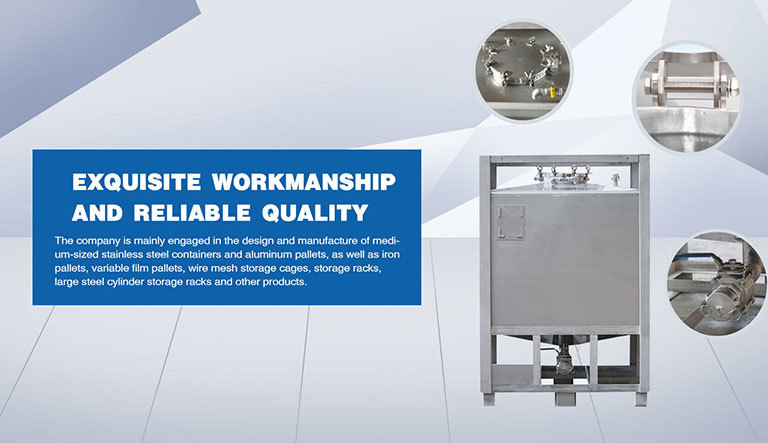01
2025
-
03
Understanding the Role of Pallet Steel in Metal Packaging Solutions
When discussing pallet steel, it is essential to recognize its critical role in the metal packaging sector, especially for companies involved in manufacturing various metal packaging containers. Pallet steel refers to the type of steel used in the construction of pallets that are essential for the transportation and storage of goods. In the context of metal packaging, pallet steel offers numerous advantages that enhance the efficiency and safety of handling metal containers.
One of the primary benefits of pallet steel is its strength and durability. Unlike wooden pallets, steel pallets can withstand heavier loads and are less prone to damage, making them ideal for transporting metal packaging containers. Their robust construction ensures that the products remain secure during transit, minimizing the risk of damage to both the packaging and the contents. This quality is particularly important in industries where the integrity of products is paramount, such as food and beverage packaging, pharmaceuticals, and hazardous materials.
Another significant advantage of pallet steel is its longevity. Steel pallets have a much longer lifespan compared to traditional wooden pallets. This durability means that businesses can invest in fewer pallets over time, leading to reduced replacement costs and decreased waste. Moreover, steel is recyclable, making it an environmentally friendly option that aligns with sustainable practices in manufacturing and logistics.
Additionally, the use of pallet steel can streamline warehouse operations. Steel pallets are generally stackable and can be designed to accommodate various sizes and shapes of packaging containers, increasing storage efficiency. This feature allows companies to maximize their warehouse space, ultimately improving their operational flexibility. Enhanced maneuverability is another aspect; steel pallets can be easily moved using forklifts or pallet jacks, which is crucial in busy warehouse environments.
However, it is vital for businesses to consider certain factors when opting for pallet steel. The initial investment may be higher than that of wooden pallets, so companies need to evaluate their specific needs and long-term benefits. Understanding the load capacity, dimensions, and compatibility with existing equipment is crucial in making an informed decision.
In conclusion, pallet steel plays an integral role in the metal packaging supply chain. Its strength, durability, and efficiency contribute significantly to the safe transport and storage of metal packaging containers. By investing in pallet steel, businesses can enhance their operational efficiency, reduce costs in the long run, and support sustainable practices within the industry. As the market for metal packaging continues to evolve, understanding the advantages of pallet steel will be essential for companies aiming to stay competitive and meet the demands of their clientele.
One of the primary benefits of pallet steel is its strength and durability. Unlike wooden pallets, steel pallets can withstand heavier loads and are less prone to damage, making them ideal for transporting metal packaging containers. Their robust construction ensures that the products remain secure during transit, minimizing the risk of damage to both the packaging and the contents. This quality is particularly important in industries where the integrity of products is paramount, such as food and beverage packaging, pharmaceuticals, and hazardous materials.
Another significant advantage of pallet steel is its longevity. Steel pallets have a much longer lifespan compared to traditional wooden pallets. This durability means that businesses can invest in fewer pallets over time, leading to reduced replacement costs and decreased waste. Moreover, steel is recyclable, making it an environmentally friendly option that aligns with sustainable practices in manufacturing and logistics.
Additionally, the use of pallet steel can streamline warehouse operations. Steel pallets are generally stackable and can be designed to accommodate various sizes and shapes of packaging containers, increasing storage efficiency. This feature allows companies to maximize their warehouse space, ultimately improving their operational flexibility. Enhanced maneuverability is another aspect; steel pallets can be easily moved using forklifts or pallet jacks, which is crucial in busy warehouse environments.
However, it is vital for businesses to consider certain factors when opting for pallet steel. The initial investment may be higher than that of wooden pallets, so companies need to evaluate their specific needs and long-term benefits. Understanding the load capacity, dimensions, and compatibility with existing equipment is crucial in making an informed decision.
In conclusion, pallet steel plays an integral role in the metal packaging supply chain. Its strength, durability, and efficiency contribute significantly to the safe transport and storage of metal packaging containers. By investing in pallet steel, businesses can enhance their operational efficiency, reduce costs in the long run, and support sustainable practices within the industry. As the market for metal packaging continues to evolve, understanding the advantages of pallet steel will be essential for companies aiming to stay competitive and meet the demands of their clientele.
Keyword:
pallet steel
RELATED NEWS
undefined






